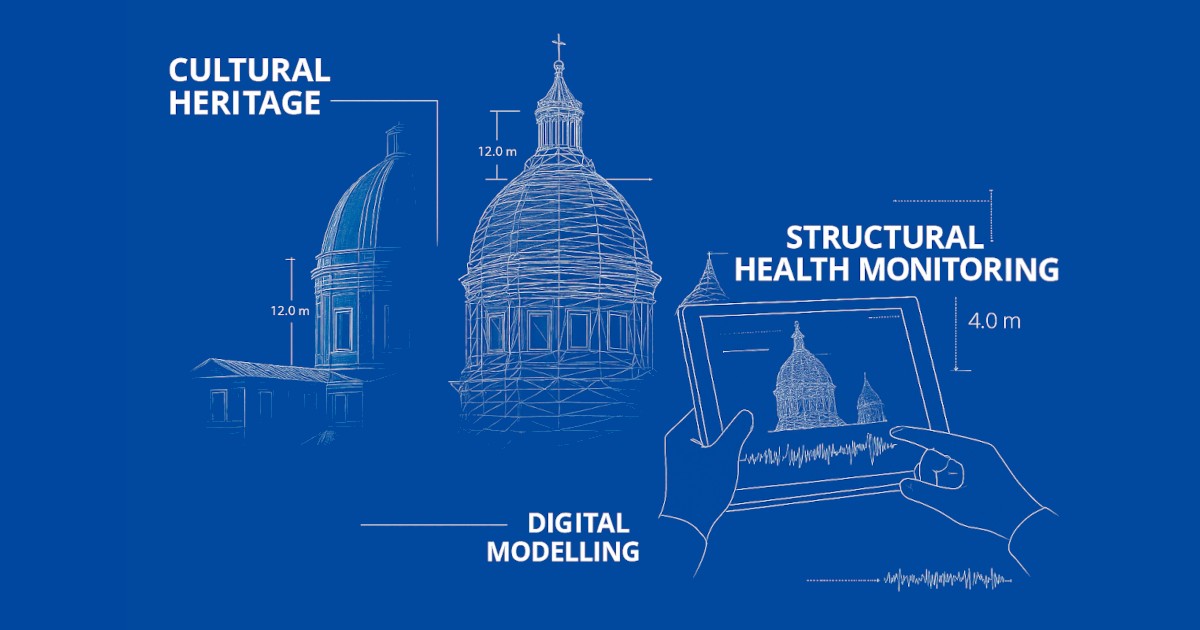Digital Modeling and Structural Health Monitoring of Cultural Heritage
A special issue of Buildings (ISSN 2075-5309). This special issue belongs to the section "Building Structures".
Deadline for manuscript submissions: 30 June 2026 | Viewed by 163

Special Issue Editors
Interests: masonry structures; numerical modelling; inverse problems; structural optimisation; seismic engineering; nonlinear analysis; material testing
Special Issues, Collections and Topics in MDPI journals
Interests: civil engineering; building; construction; structural dynamics; earthquake engineering; digital signal processing; modal analysis; seismics; earthquake
Interests: non-linear numerical modelling; monumental heritage; masonry buildings; seismic assessment; operational modal analysis; structural health monitoring
2. Department of Engineering, University of Catania, 95125 Catania, Italy
Interests: masonry buildings; monumental structures; masonry arch bridges; infilled frames; sustaianble retrofitting materials, nonlinear analyses; seismic analyses; discrete models; finite element models
Special Issues, Collections and Topics in MDPI journals
Special Issue Information
Dear Colleagues,
Heritage structures (HSs) embody the invaluable memory of our past and stand as witnesses to human achievements. Many of these structures are still in use today, playing a crucial role in the economic and social life of the countries they are located in. However, since their construction hundreds or thousands of years ago, HSs have been exposed to environmental processes, making them susceptible to material degradation and structural alterations, progressively reducing their structural safety and, in some cases, leading to their failure. In addition, in the era of climate change, these structures are facing increased natural hazards, such as floods, storms, and high cyclic variability in environmental parameters (i.e., temperature and humidity).
On the other hand, HSs are characterized by complex geometric and structural configurations as a result of historical structural evolution. For this reason, preserving diverse heritage structures—including vernacular, religious, military, defensive, industrial, monumental, and architectural landmarks—demands cutting-edge digital modeling techniques. These include both visual and mechanical models, which help describe the current condition of the structures and predict their responses to increasing natural and human-induced (anthropic) actions.
Advanced digital models, enriched with data from sensors, are essential for safeguarding their cultural and historical significance. Real-time dynamic and static monitoring, integrated with weather data, provides reliable insights into material properties and structural behavior. By implementing accurate sensors for long-term Structural Health Monitoring (SHM), digital models can be continuously updated, enabling the prediction of degradation or structural changes. Ultimately, the synergy of digital modeling and real-world data offers a robust framework for analyzing and preserving these irreplaceable structures.
This Special Issue welcomes contributions that advance the state of the art of the addressed topics focused on cultural heritage, including but not limited to the following fields:
- Advancement in dynamic identification techniques of historic and monumental construction;
- Analysis and assessment of masonry built heritage;
- Structural or architectural digital modeling;
- Novel sensor technologies and monitoring systems for structural health assessment.
- SHM in mitigating the impacts of natural hazards, such as earthquakes, hurricanes, and floods.
- Advanced algorithms, data processing, and analytics for improved damage detection and localization.
- Case studies of health monitoring implementations in various types of heritage structures.
Dr. Corrado Chisari
Dr. Daniele Spina
Dr. Giuseppe Occhipinti
Dr. Bartolomeo Pantò
Guest Editors
Manuscript Submission Information
Manuscripts should be submitted online at www.mdpi.com by registering and logging in to this website. Once you are registered, click here to go to the submission form. Manuscripts can be submitted until the deadline. All submissions that pass pre-check are peer-reviewed. Accepted papers will be published continuously in the journal (as soon as accepted) and will be listed together on the special issue website. Research articles, review articles as well as short communications are invited. For planned papers, a title and short abstract (about 250 words) can be sent to the Editorial Office for assessment.
Submitted manuscripts should not have been published previously, nor be under consideration for publication elsewhere (except conference proceedings papers). All manuscripts are thoroughly refereed through a single-blind peer-review process. A guide for authors and other relevant information for submission of manuscripts is available on the Instructions for Authors page. Buildings is an international peer-reviewed open access semimonthly journal published by MDPI.
Please visit the Instructions for Authors page before submitting a manuscript. The Article Processing Charge (APC) for publication in this open access journal is 2600 CHF (Swiss Francs). Submitted papers should be well formatted and use good English. Authors may use MDPI's English editing service prior to publication or during author revisions.
Keywords
- structural health monitoring
- numerical modeling
- risk assessment
- heritage conservation
- climate change
- natural risks
Benefits of Publishing in a Special Issue
- Ease of navigation: Grouping papers by topic helps scholars navigate broad scope journals more efficiently.
- Greater discoverability: Special Issues support the reach and impact of scientific research. Articles in Special Issues are more discoverable and cited more frequently.
- Expansion of research network: Special Issues facilitate connections among authors, fostering scientific collaborations.
- External promotion: Articles in Special Issues are often promoted through the journal's social media, increasing their visibility.
- Reprint: MDPI Books provides the opportunity to republish successful Special Issues in book format, both online and in print.
Further information on MDPI's Special Issue policies can be found here.








